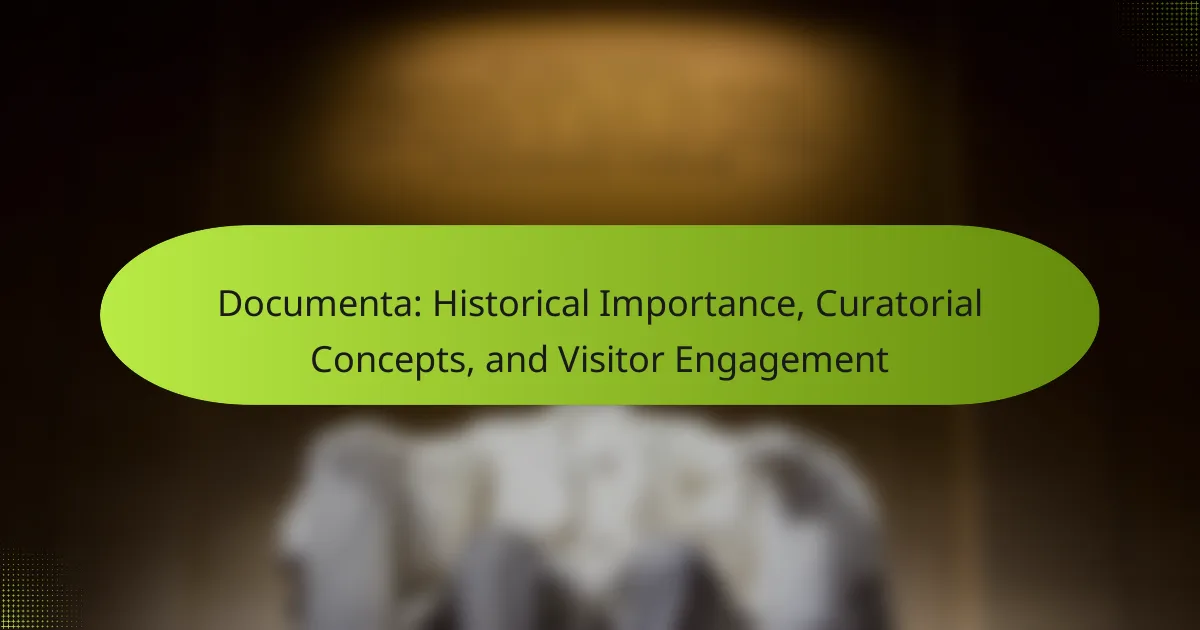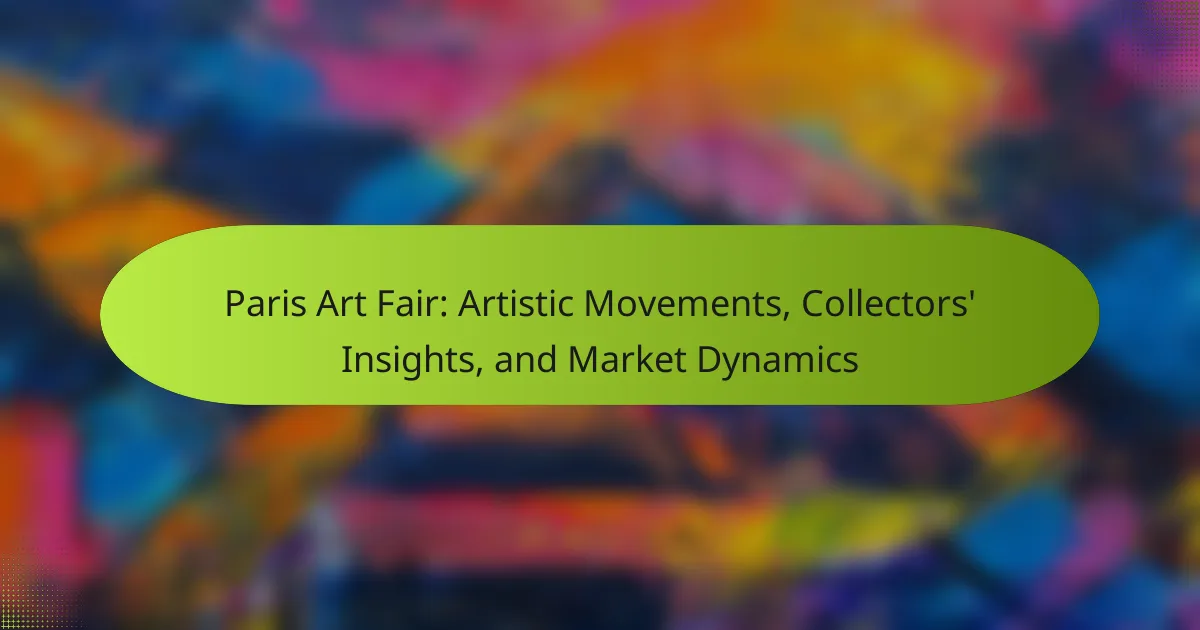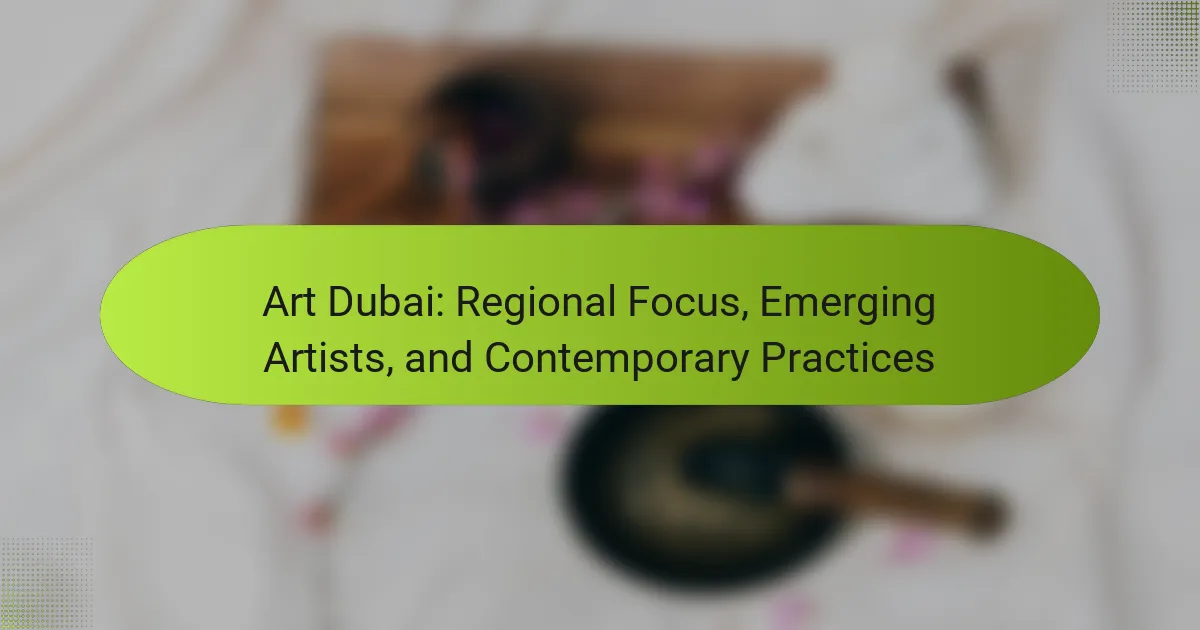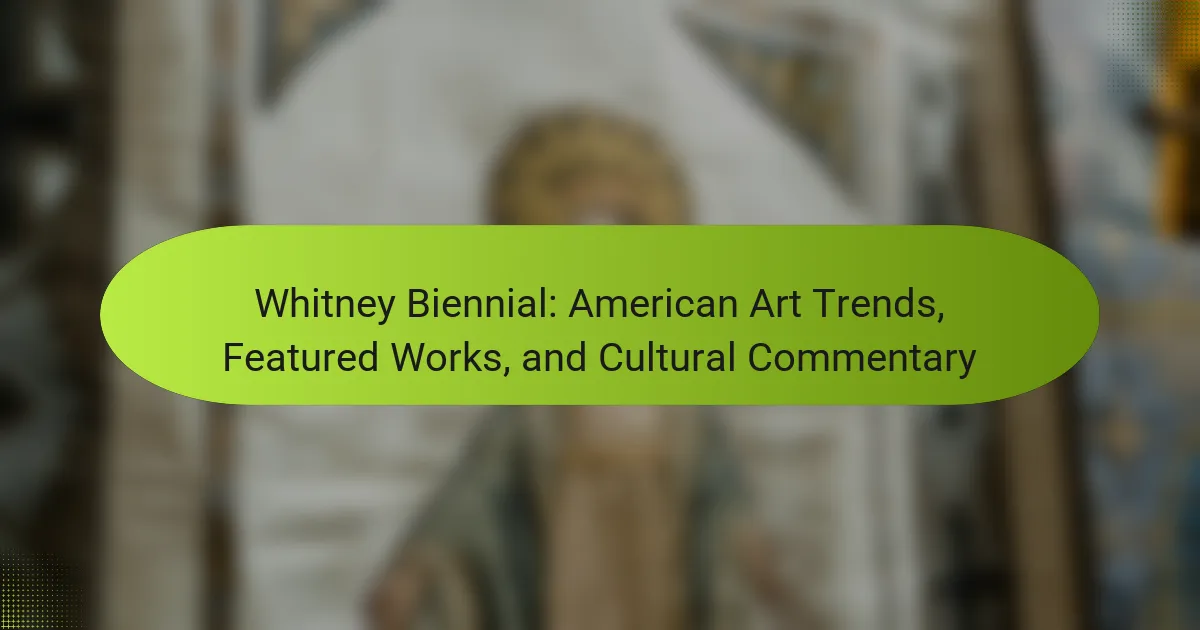The Liverpool Biennial addresses pressing contemporary issues through innovative art. It promotes artist collaborations that enhance creativity and community engagement. Public participation is encouraged through interactive exhibitions and workshops. This dynamic event fosters critical discussions on social justice, climate change, and cultural narratives.
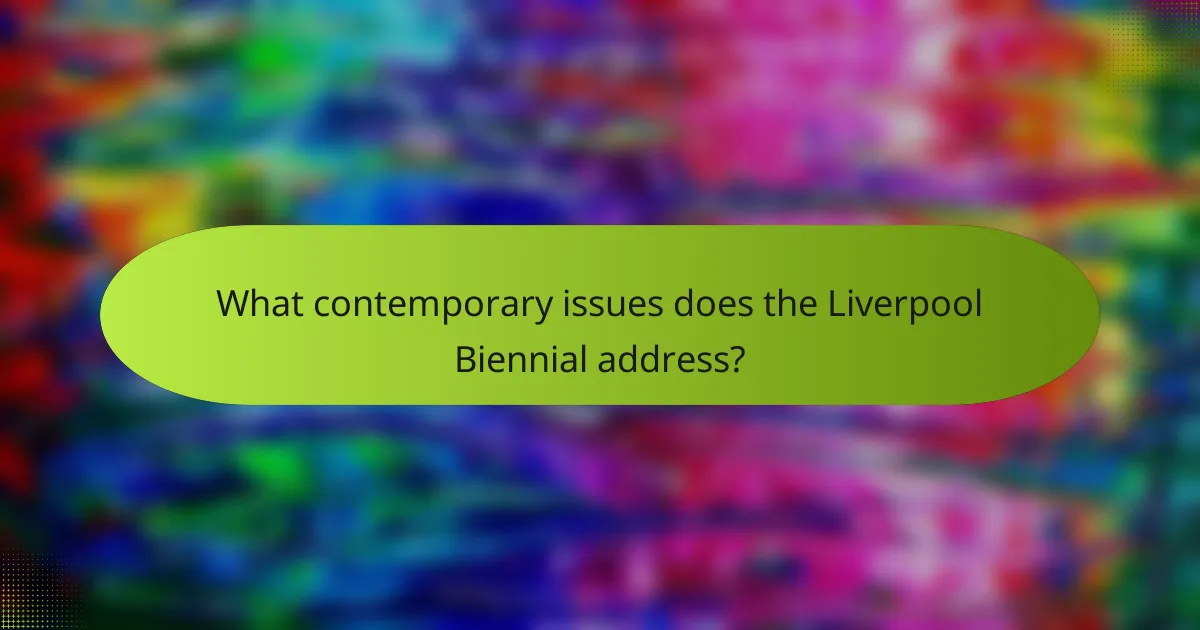
What contemporary issues does the Liverpool Biennial address?
The Liverpool Biennial addresses contemporary issues such as social justice, climate change, and community engagement. It promotes artist collaborations that reflect these themes and encourages public participation in artistic dialogue. The biennial serves as a platform for exploring diverse perspectives and fostering critical discussions around pressing global challenges. Through innovative exhibitions, it aims to inspire action and awareness among audiences.
How does the Biennial reflect social and political themes?
The Liverpool Biennial reflects social and political themes through innovative artist collaborations and public engagement. Each edition showcases contemporary issues, provoking dialogue on pressing societal matters. For example, the 2021 Biennial addressed themes of climate change and social justice, incorporating diverse artistic expressions. This approach fosters community involvement, allowing local voices to contribute to global conversations. By prioritising accessibility, the Biennial encourages broader public discourse on critical issues, enhancing its relevance in today’s socio-political landscape.
Which environmental concerns are highlighted in recent editions?
Recent editions of the Liverpool Biennial highlight concerns such as climate change, biodiversity loss, and urban pollution. Artists address these issues through collaborative projects that engage the public in environmental awareness. The focus on sustainability reflects a growing urgency in contemporary art to respond to ecological challenges. These themes encourage dialogue and inspire community action towards a more sustainable future.
What role does public discourse play in shaping the Biennial’s focus?
Public discourse significantly influences the Liverpool Biennial’s focus by shaping themes and artist collaborations. Engaging with community perspectives allows the Biennial to address contemporary issues relevant to society. This interaction fosters a dialogue between artists and the public, enhancing the overall impact of the event. As a result, the Biennial evolves to reflect pressing social concerns, making it a dynamic platform for artistic expression and public engagement.
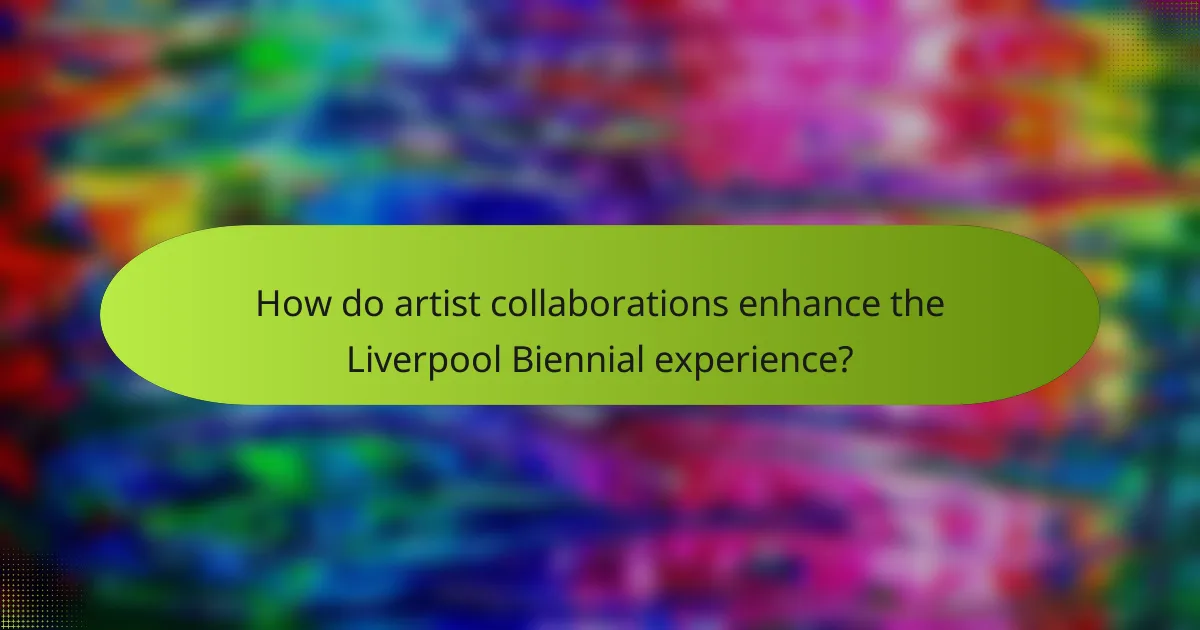
How do artist collaborations enhance the Liverpool Biennial experience?
Artist collaborations significantly enhance the Liverpool Biennial experience by fostering creativity and community engagement. These partnerships create innovative artworks that reflect diverse perspectives and contemporary issues. Collaborative projects often encourage public participation, deepening the connection between artists and audiences. This interaction transforms the Biennial into a dynamic platform for dialogue and exploration of cultural narratives.
Which notable artists have participated in collaborative projects?
Notable artists in the Liverpool Biennial have included Yoko Ono, Ai Weiwei, and Jeremy Deller. These artists engaged in collaborative projects that addressed contemporary issues and public engagement. Their contributions reflect a unique blend of artistic expression and social commentary. Collaborative works often involve installations, performances, and community-based initiatives that resonate with diverse audiences.
How do these collaborations influence artistic expression and community engagement?
Collaborations at the Liverpool Biennial significantly enhance artistic expression and community engagement. They foster diverse perspectives, allowing artists to explore contemporary issues through collective creativity. This synergy cultivates a sense of belonging and encourages public participation, making art more accessible and relevant. Engaging local communities in these collaborations strengthens connections and promotes dialogue, enriching the cultural landscape.
What innovative formats have emerged from artist partnerships?
Artist partnerships at the Liverpool Biennial have led to innovative formats like immersive installations and interactive public art. These collaborations often merge different artistic disciplines, enhancing audience engagement. For example, artists have created site-specific works that respond to the city’s cultural context, fostering community participation. Unique attributes of these formats include the use of technology and social media to extend the experience beyond physical spaces. Such approaches not only challenge traditional exhibition models but also invite diverse interpretations and interactions.
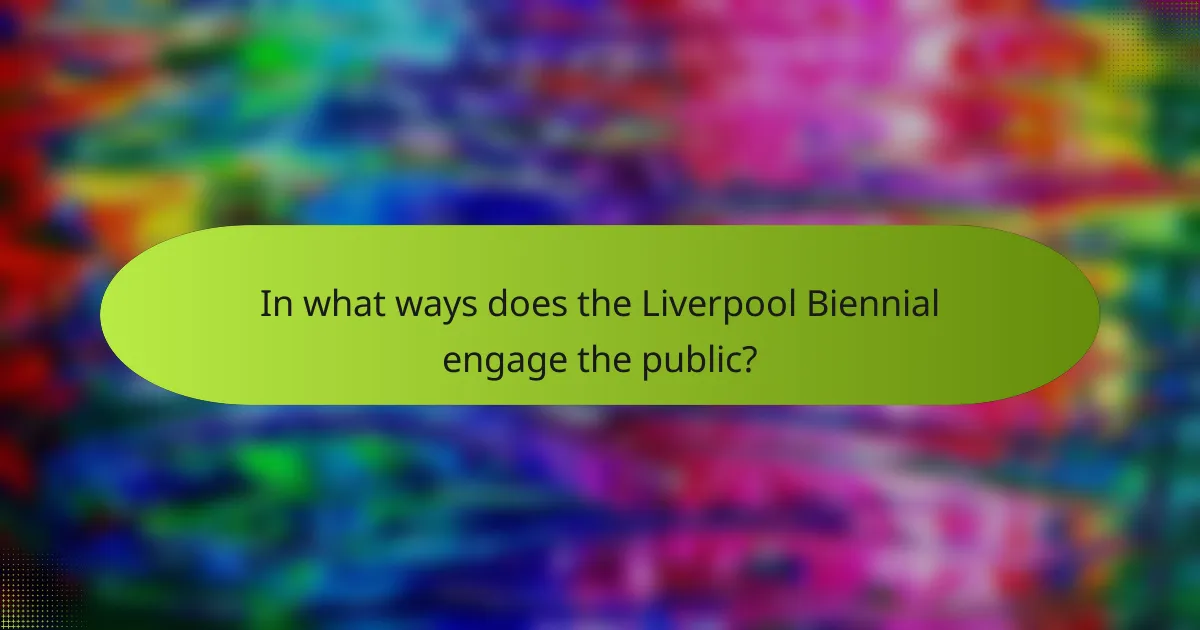
In what ways does the Liverpool Biennial engage the public?
The Liverpool Biennial engages the public through interactive exhibitions, community workshops, and artist-led projects. These initiatives foster participation and dialogue around contemporary issues. The event also utilises social media and public installations to reach diverse audiences, enhancing accessibility and engagement. Collaborations with local organisations further amplify public involvement and create a sense of community ownership.
What programs are designed for community involvement?
The Liverpool Biennial features programs designed for community involvement through artist collaborations and public engagement. These initiatives include workshops, public art installations, and community projects that encourage local participation. The Biennial emphasises contemporary issues, fostering dialogue and creativity among diverse audiences. Through these programs, the event strengthens community ties and promotes cultural exchange.
How does the Biennial cater to diverse audiences?
The Liverpool Biennial caters to diverse audiences through inclusive programming, artist collaborations, and community engagement. It features various contemporary issues that resonate with different demographics. By incorporating local voices and global perspectives, it fosters a sense of belonging. Workshops, talks, and interactive installations invite participation, enhancing accessibility for all visitors. This approach ensures that the Biennial remains relevant and engaging to a wide range of cultural backgrounds and interests.
Which outreach initiatives have proven most effective?
Community engagement initiatives, artist collaborations, and educational programs have proven most effective for the Liverpool Biennial. These outreach efforts foster inclusivity and attract diverse audiences. For example, partnerships with local schools enhance accessibility and participation. Public art installations also stimulate dialogue on contemporary issues, increasing visibility and impact.

What unique features distinguish the Liverpool Biennial from other art festivals?
The Liverpool Biennial is distinguished by its focus on contemporary issues, innovative artist collaborations, and active public engagement. Unlike other art festivals, it emphasises social relevance and community involvement. The Biennial features site-specific installations that respond to local contexts, fostering a dialogue between artists and audiences. Additionally, it includes educational programs that deepen public interaction with contemporary art, setting it apart from more traditional art events.
How does the Biennial’s location influence its artistic direction?
The Biennial’s location significantly shapes its artistic direction by reflecting local culture and community engagement. Liverpool’s rich maritime history and diverse population influence the themes and collaborations featured in the Biennial. The city serves as a backdrop for artists to explore contemporary issues, fostering dialogues that resonate with both local and international audiences. This connection enhances public engagement, making art more accessible and relevant to the community. Thus, the location not only informs the artistic vision but also strengthens the Biennial’s role as a platform for social commentary and cultural exchange.
What are the defining characteristics of its curatorial approach?
The curatorial approach of the Liverpool Biennial emphasises collaboration, public engagement, and contemporary issues. It fosters relationships between artists and communities, creating inclusive experiences. This unique attribute enhances the relevance of contemporary art in societal contexts. Through diverse programming, it addresses local and global challenges, making art accessible and thought-provoking.
Which rare artistic mediums or techniques have been showcased?
The Liverpool Biennial has showcased rare artistic mediums and techniques, including immersive installations, digital art, and unconventional materials. Artists have utilised augmented reality, soundscapes, and ephemeral art forms to engage audiences. These unique approaches highlight contemporary issues and foster public interaction.
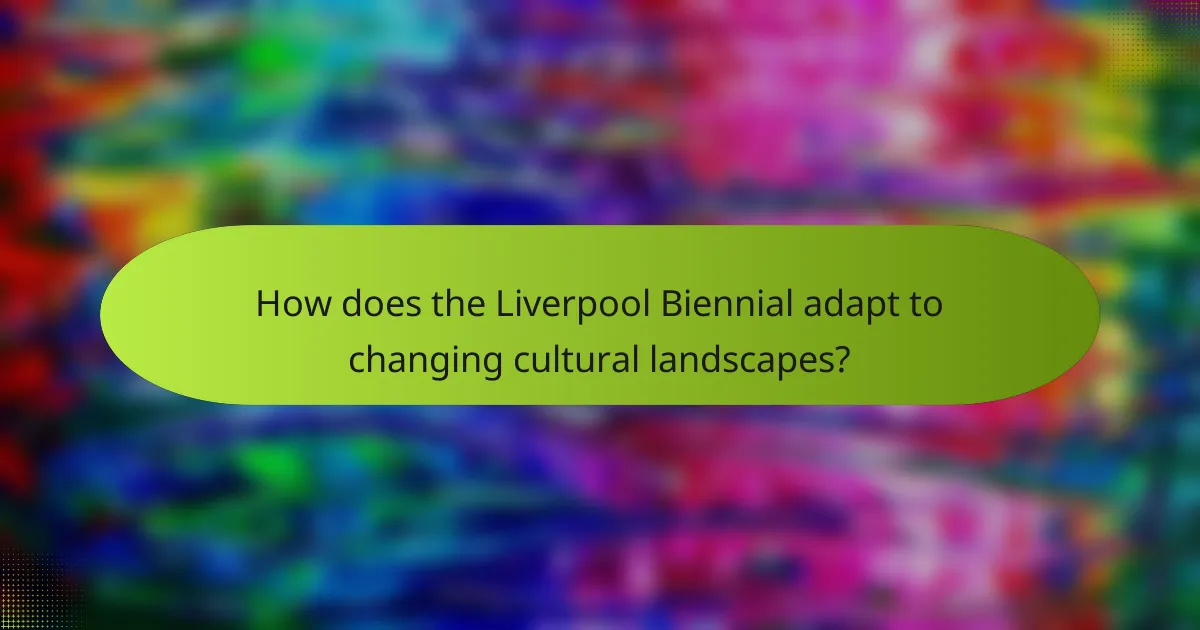
How does the Liverpool Biennial adapt to changing cultural landscapes?
The Liverpool Biennial adapts to changing cultural landscapes by embracing diverse artistic expressions and fostering community involvement. It collaborates with local and international artists to reflect contemporary issues. This engagement ensures that the Biennial remains relevant and responsive to societal shifts. Through innovative programming and public outreach, it cultivates a dynamic dialogue between art and community, enhancing cultural exchange.
What strategies are employed to remain relevant in the contemporary art scene?
To remain relevant in the contemporary art scene, the Liverpool Biennial employs diverse strategies focused on collaboration, innovation, and community engagement. It emphasises partnerships with artists, curators, and local organisations to foster dynamic dialogues. Public programs and educational initiatives invite broad participation, making art accessible and engaging. The Biennial also integrates contemporary issues, ensuring that the discourse reflects current societal challenges and cultural shifts. This approach enhances its visibility and relevance in the ever-evolving art landscape.
How has the Biennial evolved in response to global events?
The Liverpool Biennial has evolved by addressing pressing global issues through artist collaborations and public engagement. It has adapted its themes and formats in response to social, political, and environmental challenges. For instance, the 2021 edition focused on themes of recovery and resilience in the wake of the COVID-19 pandemic, showcasing diverse perspectives. This evolution reflects a commitment to fostering dialogue on contemporary issues while enhancing community involvement and accessibility. As a result, the Biennial has become a dynamic platform for artists to engage with urgent global narratives.
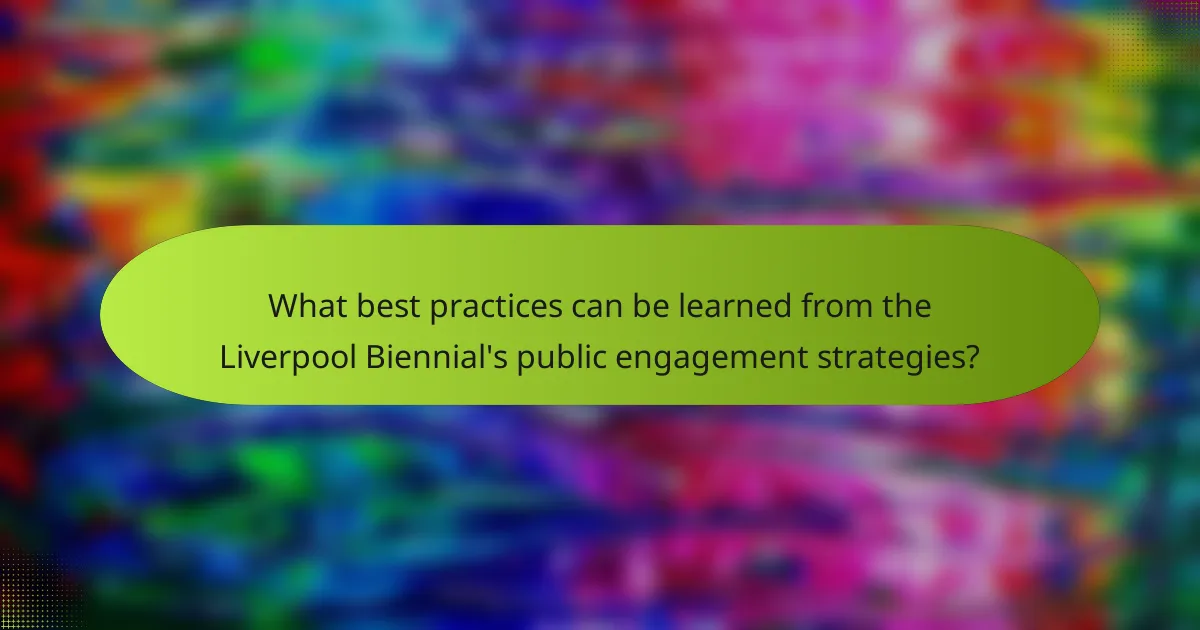
What best practices can be learned from the Liverpool Biennial’s public engagement strategies?
The Liverpool Biennial’s public engagement strategies emphasise inclusivity, community collaboration, and innovative outreach. These practices foster deeper connections between artists and audiences.
Key best practices include:
1. **Community Involvement**: Engaging local communities in the planning and execution of events enhances relevance and participation.
2. **Diverse Programming**: Offering a variety of programs caters to different interests and demographics, attracting a broader audience.
3. **Interactive Installations**: Incorporating interactive art encourages audience participation and creates memorable experiences.
4. **Partnerships with Local Organisations**: Collaborating with schools, nonprofits, and local businesses enriches engagement and expands reach.
5. **Utilising Digital Platforms**: Leveraging social media and online resources increases accessibility and allows for remote participation.
These strategies demonstrate how cultural institutions can effectively engage the public while addressing contemporary issues through art.
